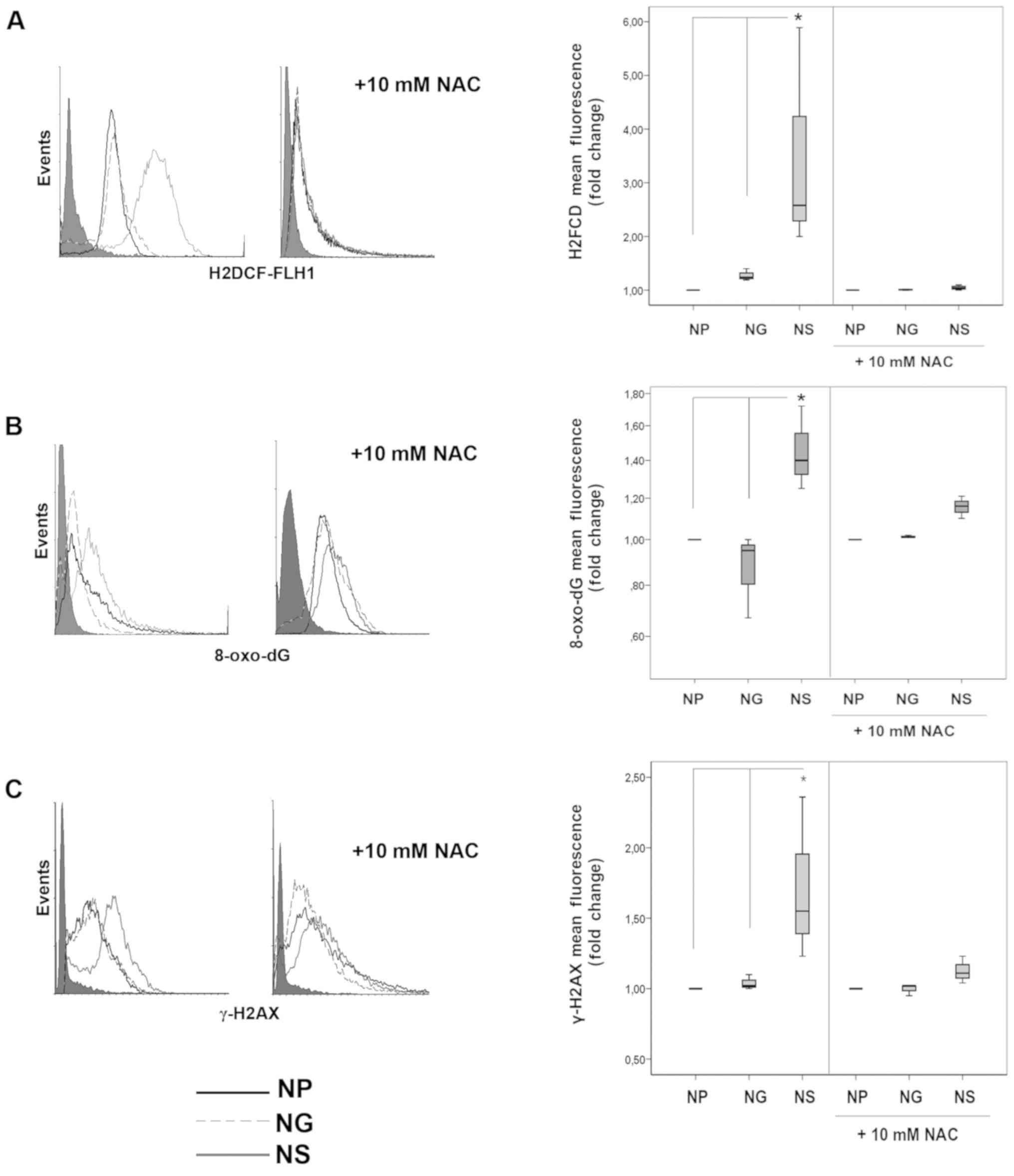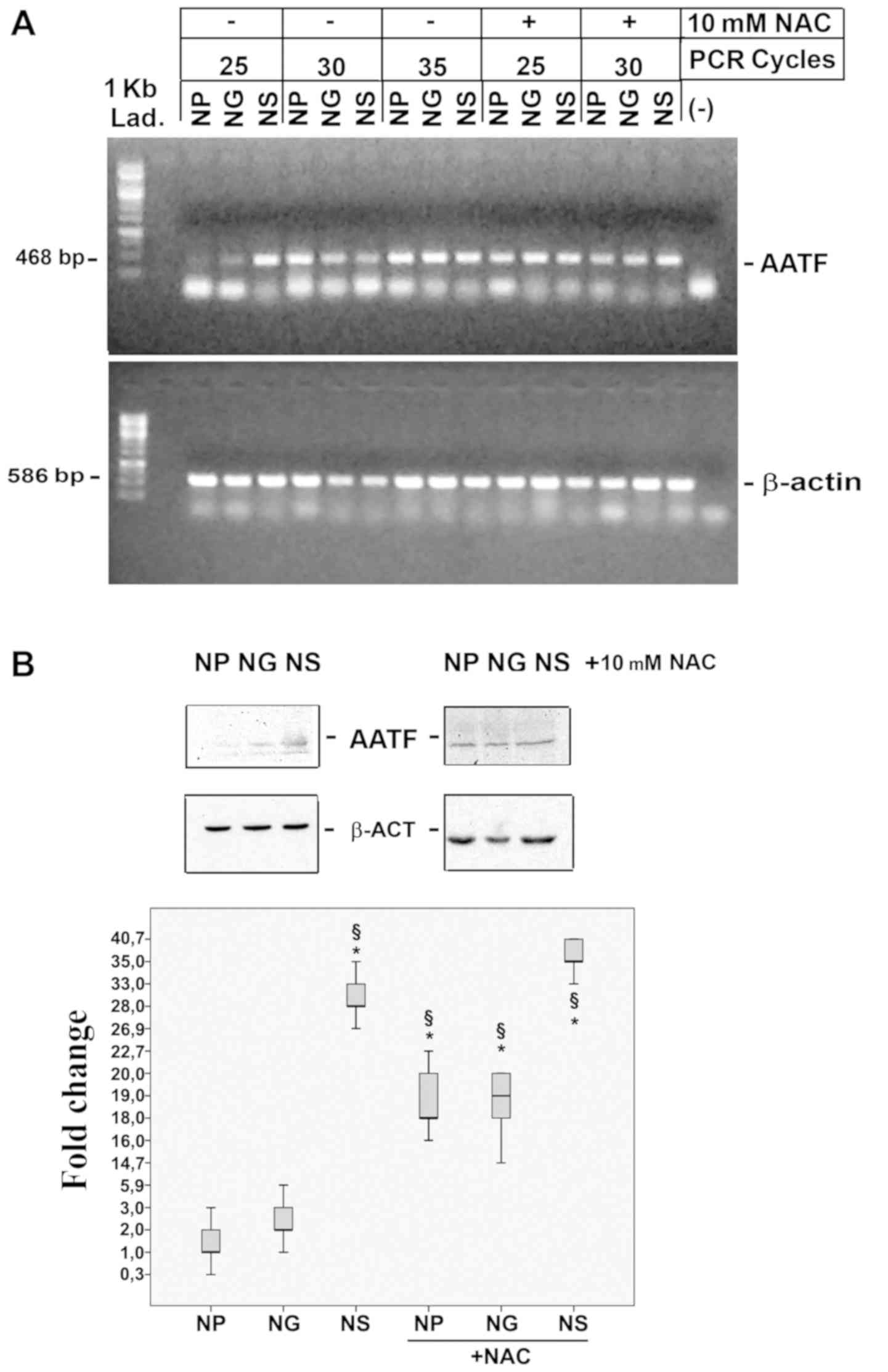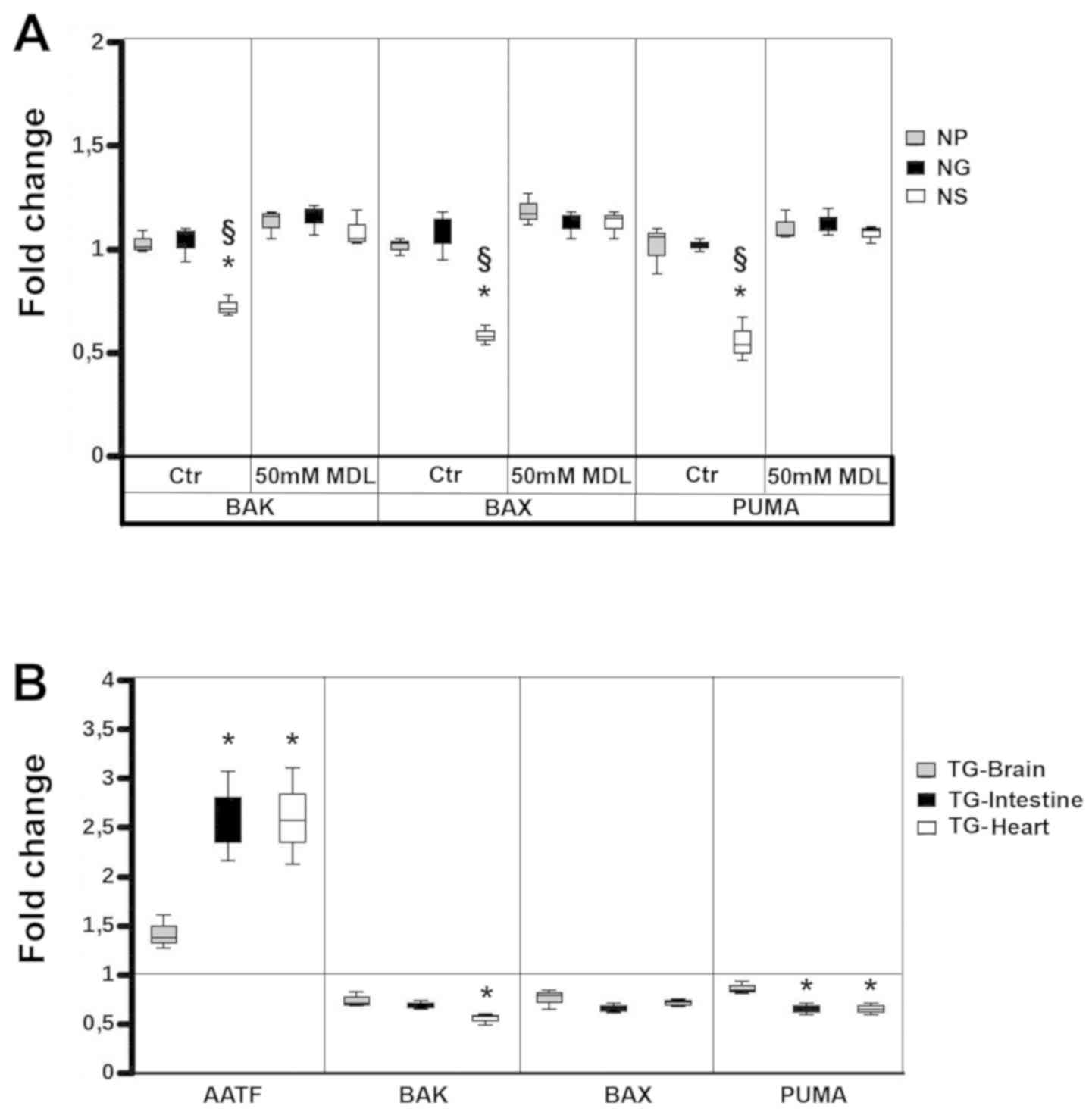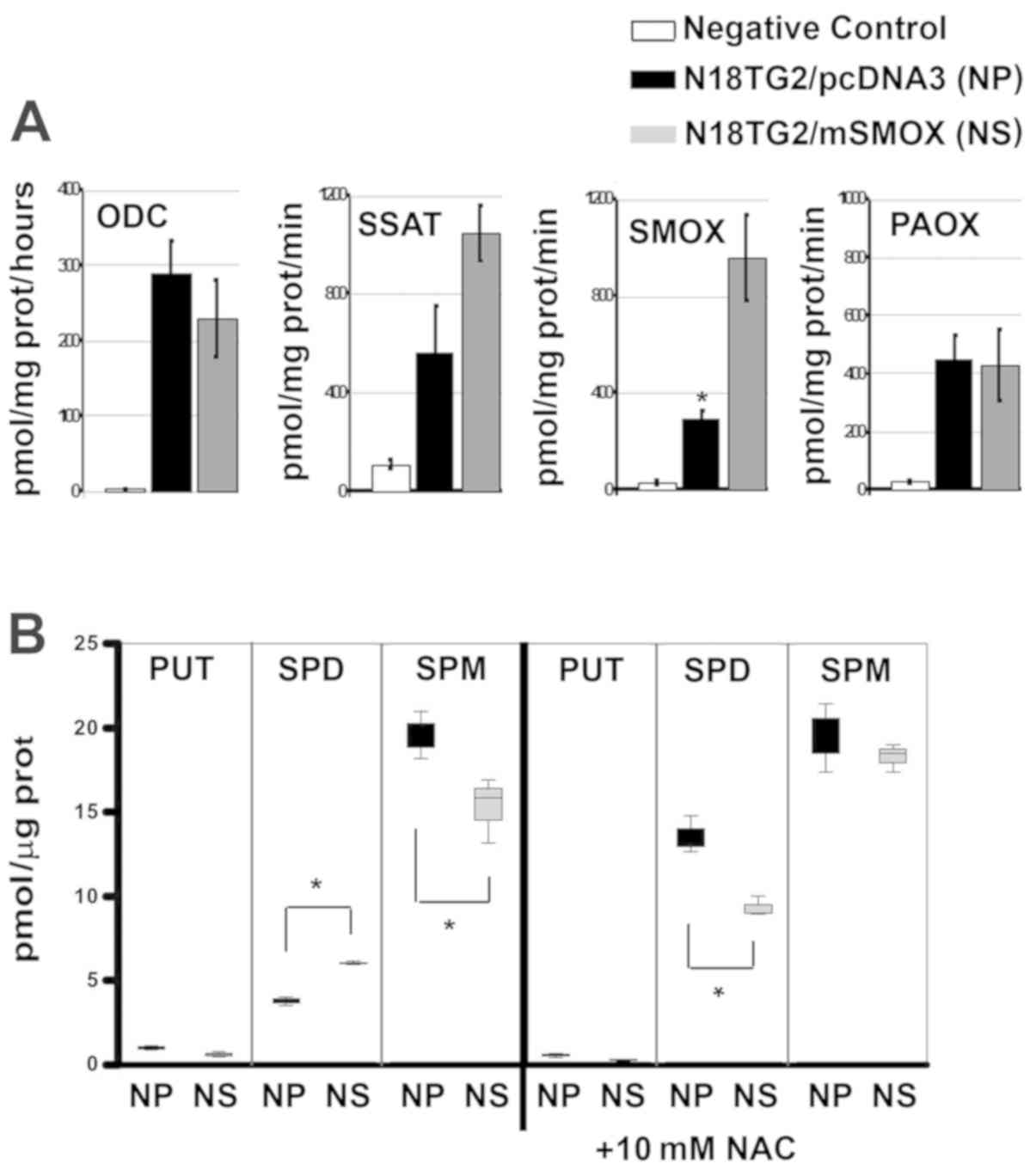|
1
|
Brodeur GM and Maris JM: Neuroblastoma In:
Principles and Practice of Pediatric Oncology. Pizzo PA and Poplack
DG: JB Lippincott; Philadelphia: pp. 933–970. 2006
|
|
2
|
Steliarova-Foucher E, Colombet M, Ries
LAG, Moreno F, Dolya A, Bray F, Hesseling P, Shin HY, Stiller CA,
Bouzbid S, et al IICC-3 contributors: International incidence of
childhood cancer, 2001-10: A population-based registry study.
Lancet Oncol. 18:719–731. 2017. View Article : Google Scholar : PubMed/NCBI
|
|
3
|
Brodeur GM: Neuroblastoma: Biological
insights into a clinical enigma. Nat Rev Cancer. 3:203–216. 2003.
View Article : Google Scholar : PubMed/NCBI
|
|
4
|
Ngan ES: Heterogeneity of neuroblastoma.
Oncoscience. 2:837–838. 2015.PubMed/NCBI
|
|
5
|
Maris JM, Hogarty MD, Bagatell R and Cohn
SL: Neuroblastoma. Lancet. 369:2106–2120. 2007. View Article : Google Scholar : PubMed/NCBI
|
|
6
|
Attiyeh EF, London WB, Mossé YP, Wang Q,
Winter C, Khazi D, McGrady PW, Seeger RC, Look AT, Shimada H, et al
Children's Oncology Group: Chromosome 1p and 11q deletions and
outcome in neuroblastoma. N Engl J Med. 353:2243–2253. 2005.
View Article : Google Scholar : PubMed/NCBI
|
|
7
|
Mlakar V, Jurkovic Mlakar S, Lopez G,
Maris JM, Ansari M and Gumy-Pause F: 11q deletion in neuroblastoma:
A review of biological and clinical implications. Mol Cancer.
16:1142017. View Article : Google Scholar : PubMed/NCBI
|
|
8
|
Bown N, Cotterill S, Lastowska M, O'Neill
S, Pearson AD, Plantaz D, Meddeb M, Danglot G, Brinkschmidt C,
Christiansen H, et al: Gain of chromosome arm 17q and adverse
outcome in patients with neuroblastoma. N Engl J Med.
340:1954–1961. 1999. View Article : Google Scholar : PubMed/NCBI
|
|
9
|
O'Leary M, Krailo M, Anderson JR and
Reaman GH; Children's Oncology Group: Progress in childhood cancer:
50 years of research collaboration, a report from the Children's
Oncology Group. Semin Oncol. 35:484–493. 2008. View Article : Google Scholar : PubMed/NCBI
|
|
10
|
Shimada H, Chatten J, Newton WA Jr, Sachs
N, Hamoudi AB, Chiba T, Marsden HB and Misugi K: Histopathologic
prognostic factors in neuroblastic tumors: Definition of subtypes
of ganglioneuroblastoma and an age-linked classification of
neuro-blastomas. J Natl Cancer Inst. 73:405–416. 1984. View Article : Google Scholar : PubMed/NCBI
|
|
11
|
Oberthuer A, Berthold F, Warnat P, Hero B,
Kahlert Y, Spitz R, Ernestus K, König R, Haas S, Eils R, et al:
Customized oligo-nucleotide microarray gene expression-based
classification of neuroblastoma patients outperforms current
clinical risk stratification. J Clin Oncol. 24:5070–5078. 2006.
View Article : Google Scholar : PubMed/NCBI
|
|
12
|
Wang Q, Diskin S, Rappaport E, Attiyeh E,
Mosse Y, Shue D, Seiser E, Jagannathan J, Shusterman S, Bansal M,
et al: Integrative genomics identifies distinct molecular classes
of neuroblastoma and shows that multiple genes are targeted by
regional alterations in DNA copy number. Cancer Res. 66:6050–6062.
2006. View Article : Google Scholar : PubMed/NCBI
|
|
13
|
Schumacker PT: Reactive oxygen species in
cancer cells: Live by the sword, die by the sword. Cancer Cell.
10:175–176. 2006. View Article : Google Scholar : PubMed/NCBI
|
|
14
|
Casero RA Jr and Marton LJ: Targeting
polyamine metabolism and function in cancer and other
hyperproliferative diseases. Nat Rev Drug Discov. 6:373–390. 2007.
View Article : Google Scholar : PubMed/NCBI
|
|
15
|
Cervelli M, Angelucci E, Germani F,
Amendola R and Mariottini P: Inflammation, carcinogenesis and
neurodegeneration studies in transgenic animal models for polyamine
research. Amino Acids. 46:521–530. 2014. View Article : Google Scholar
|
|
16
|
Cervelli M, Amendola R, Polticelli F and
Mariottini P: Spermine oxidase: Ten years after. Amino Acids.
42:441–450. 2012. View Article : Google Scholar
|
|
17
|
Polticelli F, Salvi D, Mariottini P,
Amendola R and Cervelli M: Molecular evolution of the polyamine
oxidase gene family in Metazoa. BMC Evol Biol. 12:902012.
View Article : Google Scholar : PubMed/NCBI
|
|
18
|
Amendola R, Bellini A, Cervelli M, Degan
P, Marcocci L, Martini F and Mariottini P: Direct oxidative DNA
damage, apoptosis and radio sensitivity by spermine oxidase
activities in mouse neuro-blastoma cells. Biochim Biophys Acta.
1755:15–24. 2005.PubMed/NCBI
|
|
19
|
Bianchi M, Bellini A, Cervelli M, Degan P,
Marcocci L, Martini F, Scatteia M, Mariottini P and Amendola R:
Chronic sub-lethal oxidative stress by spermine oxidase
overactivity induces continuous DNA repair and hypersensitivity to
radiation exposure. Biochim Biophys Acta. 1773:774–783. 2007.
View Article : Google Scholar : PubMed/NCBI
|
|
20
|
Ceci R, Duranti G, Leonetti A, Pietropaoli
S, Spinozzi F, Marcocci L, Amendola R, Cecconi F, Sabatini S,
Mariottini P, et al: Adaptive responses of heart and skeletal
muscle to spermine oxidase overexpression: Evaluation of a new
transgenic mouse model. Free Radic Biol Med. 103:216–225. 2017.
View Article : Google Scholar : PubMed/NCBI
|
|
21
|
Cervelli M, Leonetti A, Duranti G,
Sabatini S, Ceci R and Mariottini P: Skeletal muscle
pathophysiology: The emerging role of spermine oxidase and
spermidine. Med Sci (Basel). 6:62018.
|
|
22
|
Bruno T, De Nicola F, Iezzi S, Lecis D,
D'Angelo C, Di Padova M, Corbi N, Dimiziani L, Zannini L, Jekimovs
C, et al: Che-1 phosphorylation by ATM/ATR and Chk2 kinases
activates p53 transcription and the G2/M checkpoint. Cancer Cell.
10:473–486. 2006. View Article : Google Scholar : PubMed/NCBI
|
|
23
|
Liu X, Cai S, Zhang C, Liu Z, Luo J, Xing
B and Du X: Deacetylation of NAT10 by Sirt1 promotes the transition
from rRNA biogenesis to autophagy upon energy stress. Nucleic Acids
Res. 46:9601–9616. 2018. View Article : Google Scholar : PubMed/NCBI
|
|
24
|
Höpker K, Hagmann H, Khurshid S, Chen S,
Hasskamp P, Seeger-Nukpezah T, Schilberg K, Heukamp L, Lamkemeyer
T, Sos ML, et al: AATF/Che-1 acts as a phosphorylation-dependent
molecular modulator to repress p53-driven apoptosis. EMBO J.
31:3961–3975. 2012. View Article : Google Scholar : PubMed/NCBI
|
|
25
|
Sang Q, Liu X, Wang L, Qi L, Sun W, Wang
W, Sun Y and Zhang H: Sun Y andZhang H: CircSNCA downregulation by
pramipexole treatment mediates cell apoptosis and autophagy in
Parkinson's disease by targeting miR-7. Aging (Albany NY).
10:62018.
|
|
26
|
Cervelli M, Bellini A, Bianchi M, Marcocci
L, Nocera S, Polticelli F, Federico R, Amendola R and Mariottini P:
Mouse spermine oxidase gene splice variants. Nuclear subcellular
localization of a novel active isoform. Eur J Biochem. 271:760–770.
2004. View Article : Google Scholar : PubMed/NCBI
|
|
27
|
Cervelli M, Bellavia G, D'Amelio M,
Cavallucci V, Moreno S, Berger J, Nardacci R, Marcoli M, Maura G,
Piacentini M, et al: A new transgenic mouse model for studying the
neurotoxicity of spermine oxidase dosage in the response to
excitotoxic injury. PLoS One. 8:e648102013. View Article : Google Scholar : PubMed/NCBI
|
|
28
|
Pfaffl MW, Horgan GW and Dempfle L:
Relative expression software tool (REST) for group-wise comparison
and statistical analysis of relative expression results in
real-time PCR. Nucleic Acids Res. 30:e362002. View Article : Google Scholar : PubMed/NCBI
|
|
29
|
Cadet J, Douki T, Gasparutto D and Ravanat
JL: Oxidative damage to DNA: Formation, measurement and biochemical
features. Mutat Res. 531:5–23. 2003. View Article : Google Scholar : PubMed/NCBI
|
|
30
|
Huang X, Okafuji M, Traganos F, Luther E,
Holden E and Darzynkiewicz Z: Assessment of histone H2AX
phosphorylation induced by DNA topoisomerase I and II inhibitors
topotecan and mitoxantrone and by the DNA cross-linking agent
cisplatin. Cytometry A. 58:99–110. 2004. View Article : Google Scholar : PubMed/NCBI
|
|
31
|
Amendola R, Cervelli M, Fratini E,
Sallustio DE, Tempera G, Ueshima T, Mariottini P and Agostinelli E:
Reactive oxygen species spermine metabolites generated from amine
oxidases and radiation represent a therapeutic gain in cancer
treatments. Int J Oncol. 43:813–820. 2013. View Article : Google Scholar : PubMed/NCBI
|
|
32
|
Cervelli M, Fratini E, Amendola R, Bianchi
M, Signori E, Ferraro E, Lisi A, Federico R, Marcocci L and
Mariottini P: Increased spermine oxidase (SMO) activity as a novel
differentiation marker of myogenic C2C12 cells. Int J Biochem Cell
Biol 4. 1:934–944. 2009. View Article : Google Scholar
|
|
33
|
Cervelli M, Bellavia G, Fratini E,
Amendola R, Polticelli F, Barba M, Federico R, Signore F, Gucciardo
G, Grillo R, et al: Spermine oxidase (SMO) activity in breast tumor
tissues and biochemical analysis of the anticancer spermine
analogues BENSpm and CPENSpm. BMC Cancer. 10:5552010. View Article : Google Scholar : PubMed/NCBI
|
|
34
|
Pledgie A, Huang Y, Hacker A, Zhang Z,
Woster PM, Davidson NE and Casero RA Jr: Spermine oxidase
SMO(PAOh1), Not N1-acetylpolyamine oxidase PAO, is the
primary source of cytotoxic H2 O2 in
polyamine analogue-treated human breast cancer cell lines. J Biol
Chem. 280:39843–39851. 2005. View Article : Google Scholar : PubMed/NCBI
|
|
35
|
Capone C, Cervelli M, Angelucci E,
Colasanti M, Macone A, Mariottini P and Persichini T: A role for
spermine oxidase as a mediator of reactive oxygen species
production in HIV-Tat-induced neuronal toxicity. Free Radic Biol
Med. 63:99–107. 2013. View Article : Google Scholar : PubMed/NCBI
|
|
36
|
Sun SY: N-acetylcysteine, reactive oxygen
species and beyond. Cancer Biol Ther. 9:109–110. 2010. View Article : Google Scholar :
|
|
37
|
Fogel-Petrovic M, Vujcic S, Miller J and
Porter CW: Differential post-transcriptional control of ornithine
decarboxylase and spermidine-spermine
N1-acetyltransferase by polyamines. FEBS Lett.
391:89–94. 1996. View Article : Google Scholar : PubMed/NCBI
|
|
38
|
Mastrantonio R, Cervelli M, Pietropaoli S,
Mariottini P, Colasanti M and Persichini T: HIV-Tat induces the
Nrf2/ARE pathway through NMDA receptor-elicited spermine oxidase
activation in human neuroblastoma cells. PLoS One. 11:e01498022016.
View Article : Google Scholar : PubMed/NCBI
|
|
39
|
Pietropaoli S, Leonetti A, Cervetto C,
Venturini A, Mastrantonio R, Baroli G, Persichini T, Colasanti M,
Maura G, Marcoli M, et al: Glutamate Excitotoxicity Linked to
Spermine Oxidase Overexpression. Mol Neurobiol. 55:7259–7270. 2018.
View Article : Google Scholar : PubMed/NCBI
|
|
40
|
Caforio M, Sorino C, Iacovelli S,
Fanciulli M, Locatelli F and Folgiero V: Recent advances in
searching c-Myc transcriptional cofactors during tumorigenesis. J
Exp Clin Cancer Res. 37:2392018. View Article : Google Scholar : PubMed/NCBI
|
|
41
|
Jing P, Zou J, Weng K and Peng P: The
PI3K/AKT axis modulates AATF activity in Wilms' tumor cells. FEBS
Open Bio. 8:1615–1623. 2018. View Article : Google Scholar : PubMed/NCBI
|













